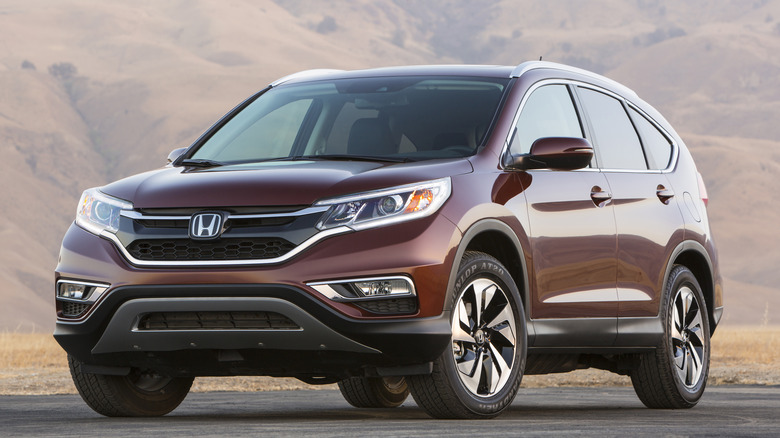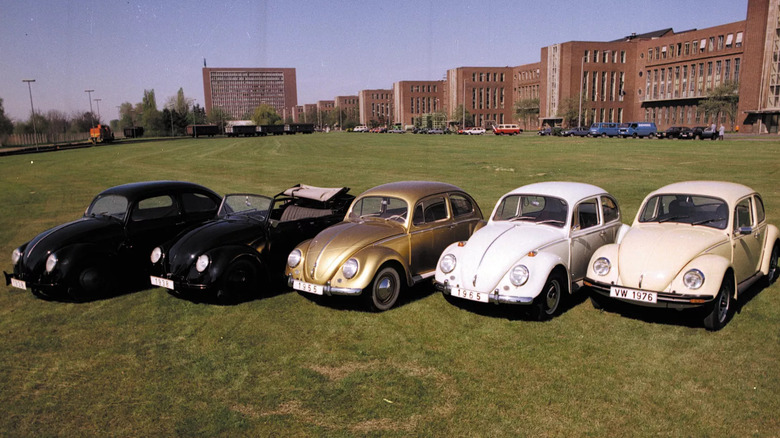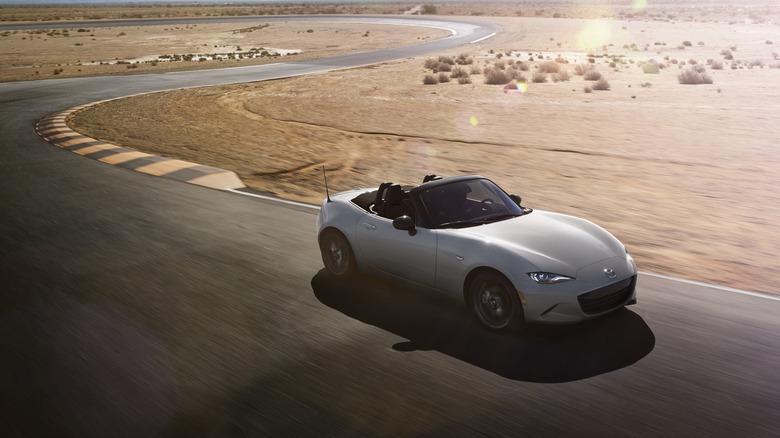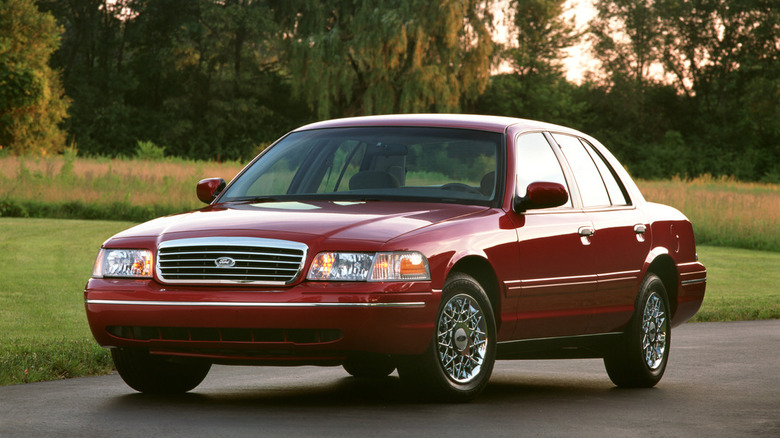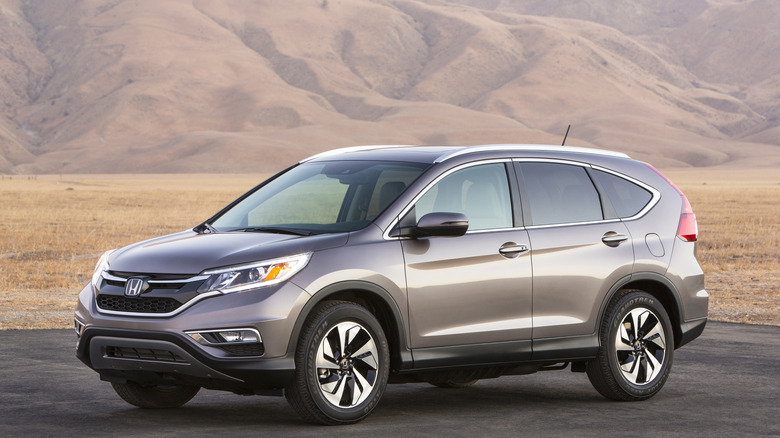5 Of The Easiest Cars To Work On
As a former mechanic and someone who's serviced all of my own vehicles, I'd like to begin with the disclaimer that what makes a car easy to work on can be entirely subjective. For instance, I do the maintenance necessary to keep a classic car as a daily driver, so I'm familiar with analog technology like carburetors and mechanical fuel pumps as well as early diagnostic tools such as timing lights and vacuum gauges. Conversely, people who grew up in the era of modern OBD-II diagnostics and computerized engine control will likely find it easier to service newer vehicles. That said, I have experience working with all types of cars from just about every period, and I compiled this list based on my own experience and information from trusted outside sources.
Because keeping your car running right involves a wide range of tasks, this list will take into account routine maintenance like changing filters and fluids to more involved jobs like servicing a car's running gear and electrical system. Don't expect to find any rare or exotic vehicles here, either, since working on your own car also means sourcing replacement parts. As such, I'll prioritize models with robust OEM and third-party parts availability, whether from the manufacturer, parts retailers, or the used market. Finally, I will limit the results to one vehicle of each general type, in no particular order. So there will be one sedan, one SUV, one sports car, and so on. Let's start with a timeless model that goes back to the 1930s.
Classic car: Volkswagen Beetle
Maintaining a classic Volkswagen Beetle is famously simple, thanks to its no-frills design and construction. Let's start in back with the engine. It's held in place by a basic array of motor mounts and four bolts fastening it to the transmission bellhousing. It takes a slim hand or some creative use of extensions and universal joints to get back there, but thanks to how easily it comes out I was able to change my Beetle's clutch pilot bearing in about 30 minutes. The transmission is likewise easily removed for maintenance or replacement.
The Beetle has some obsolete components, but they can be easily updated. For instance, it uses a generator to recharge the battery rather than an alternator like modern cars, and employs points-based ignition. However, there are plenty of online guides for swapping these out for more modern units, making the Beetle particularly well-suited for novice mechanics learning how different systems work. Almost every component on the Beetle is simple and straightforward, with plenty of them able to be serviced or replaced with a little bit of time and persistence and some basic hand tools. Owners of air-cooled classic Beetles also don't have to worry about spilling coolant everywhere, although it's recommended to change the oil every 3,000 miles or so.
Volkswagen no longer sells legacy parts, but there are plenty of third-party VW parts retailers like JBugs, Aircooled Vintage Works, and Wolfsburg West. They provide everything you need for your classic Beetle, from filters and fasteners to engine internals and body panels. It's also easy to find service manuals and support from other Beetle owners online, making this likely the most accessible classic car for beginners. Engines and transmissions are commonly remanufactured as well, so you can usually find one near you if necessary.
Sports car: Mazda MX-5 Miata
All of the members of the MX-5 family dating back to 1989 are fairly easy to work on. While the car has certainly changed over that time, one thing that hasn't is its dead-simple design under the hood. These are among the simplest modern cars you can buy, with a basic 2.0-liter Skyactiv inline-four making 181 horsepower. Once it's out of the car, this engine can be disassembled by a mechanic working at a reasonable pace in roughly an hour. The Miata has a conventional front-engine, rear-drive layout, so the running gear runs the length of the car rather than all being pushed to the front. Older Miatas feature simpler powertrains, making them among the best inexpensive used cars for beginner mechanics despite the common issues faced by Miata owners.
This simplicity naturally means more reliability; fewer complex moving parts means less can go wrong. As such, the modern ND-series MX-5 enjoys a solid reputation for reliability according to owner reviews, forums, and trusted sources. And if something does fail, the 2025 Miata is a fully-capable modern car, with all the sensors and technology you'd expect to find. Diagnostic equipment that interprets error codes and helps with regular maintenance is available at a reasonable cost, plus you'll never run short of aftermarket parts or tech support. The Miata is one of the most easily-modified cars available today, up there with the likes of the Subaru BRZ / Toyota GR86. However, it trumps these cars and their 2.4-liter boxer engines, which are a bigger challenge for beginner mechanics than Mazda's simpler inline-four.
SUV: 1997-2001 Jeep Cherokee
There's a reason why you still see lots of XJ Jeep Cherokees on the road today, despite the fact that the newest models are almost 25 years old. The Cherokee was the first modern SUV, and is often cited among the most influential automotive designs of all time. It also stands out for ease of maintenance. Facelifted (1997-2001) Cherokees sport various exterior and interior updates from older versions, so some components aren't interchangeable. Many parts underneath, however, are shared between older Cherokees, Wranglers, and Grand Cherokees, provided they have identical powertrains. Jeep's legendary 4.0-liter inline-six will run forever with proper maintenance, and those procedures are as dead simple as can be. Another welcome advantage to working on the XJ Cherokee is its 8.3-inch ground clearance on stock suspension and tires; I seldom use a jack when it's time to work underneath my '96 Cherokee. And all American cars manufactured for 1996 and later feature modern OBDII diagnostics, a helpful bonus.
There are plenty of sources for aftermarket Cherokee parts and accessories like Quadratec and 4 Wheel Parts. Much like the Beetle and Miata, the Cherokee is popular among enthusiasts and hobbyists, so you're likely to find a step-by-step guide online for any common maintenance procedure. The Cherokee's 2.5-liter four-banger and the larger 4.0-liter six-cylinder engines enjoy reputations for reliability and ease of maintenance, with owners routinely clocking six-figure mileage without breaking much of a sweat.
Sedan: Gen3 Panther-body Ford (Crown Victoria, Mercury Grand Marquis)
Consider how far a New York taxicab is likely to travel in its lifetime, with virtually all of those miles being in stop-and-go city traffic. Also think of a highway police interceptor, which is expected to go full-throttle on a moment's notice without issues. Ford introduced the Panther platform in 1979, using it for fleet vehicles like the Ford LTD and Mercury Marquis. For 1983, Panther models included the LTD Crown Victoria, Mercury Grand Marquis, and Lincoln Town Car. These cars became staples of police, taxi, and limousine fleets almost from the get-go. Bear in mind that most of those jobs involve long, hard miles, meaning Ford had to overbuild the Panther platform to ensure its longevity. That's exactly why it's so dependable and easy to work on today; for one, the 4.6-liter V8 is notably reliable to begin with. Panther body cars wouldn't have lasted long as fleet vehicles otherwise; less maintenance equals a lower overhead and less downtime for businesses.
Moreover, its traditional large body-on-frame build favors simple and durable construction, with owners noting that its size also means that parts are reasonably well-spaced and accessible. That makes them easy to identify and inspect, even for DIYers without a lot of experience. And for seasoned mechanics, these larger, more spread-out parts mean fewer backaches and skinned knuckles as you contort yourself to grip that last pesky bolt head. The third generation Crown Victoria and Grand Marquis models that debuted in 1998 got an updated version of the 4.6-liter V8 that made between 200 and 220 horsepower, as well as OBD2 diagnostics that had become standard two years earlier. The volume of sales to fleet customers during this model's heyday means parts availability is plentiful, including direct from Ford.
Crossover utility vehicle: Non-hybrid Honda CR-V
Most crossovers share a similar blueprint: unibody construction, a small front-mounted engine (generally a basic four-cylinder, sometimes with turbo or hybrid functionality), and front-or all-wheel drive. This formula has become more recognizable and common among different manufacturers in recent years. As far as which one is easiest to service, however, that title goes to the fourth-generation 2012-2016) Honda CR-V. For example, the oil pan is clearly marked with the location of the drain plug, which is quite accessible. The CR-V also shares its K-24 engine with the likes of the Honda Civic, Odyssey, and Accord, meaning it's relatively easy to find OEM or aftermarket parts.
Various outlets, owners, and forums cite the CR-V as a particularly dependable model, in keeping with Honda's generally outstanding reputation for reliability. Combining these factors makes the CR-V a commonly-found and easily-maintained car with a robust service and parts infrastructure to back it up, plus all the advanced diagnostics that make owning a modern car easier. In its simplest form, the CR-V features no hybrid powertrain with its associated wiring and batteries, meaning less complexity for beginners learning to fix cars. In terms of maintenance, it's also easy on the wallet at just $326 per year according to Repair Pal, and DIY mechanics will spend even less.
